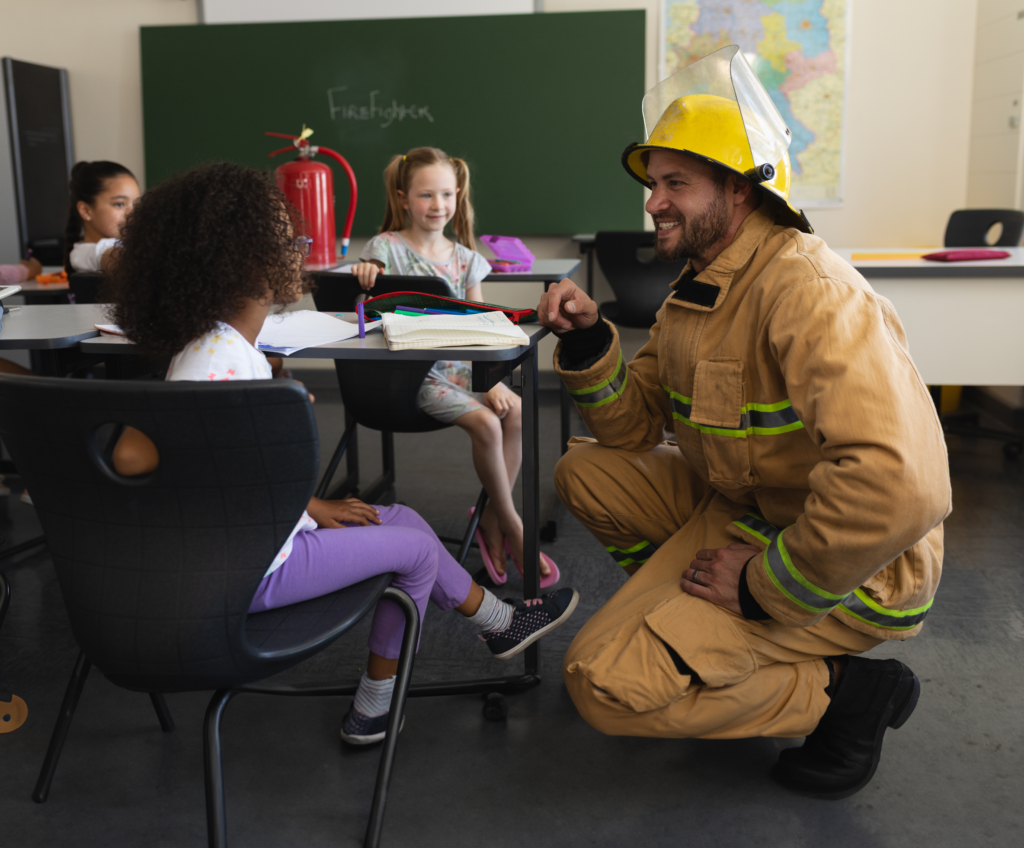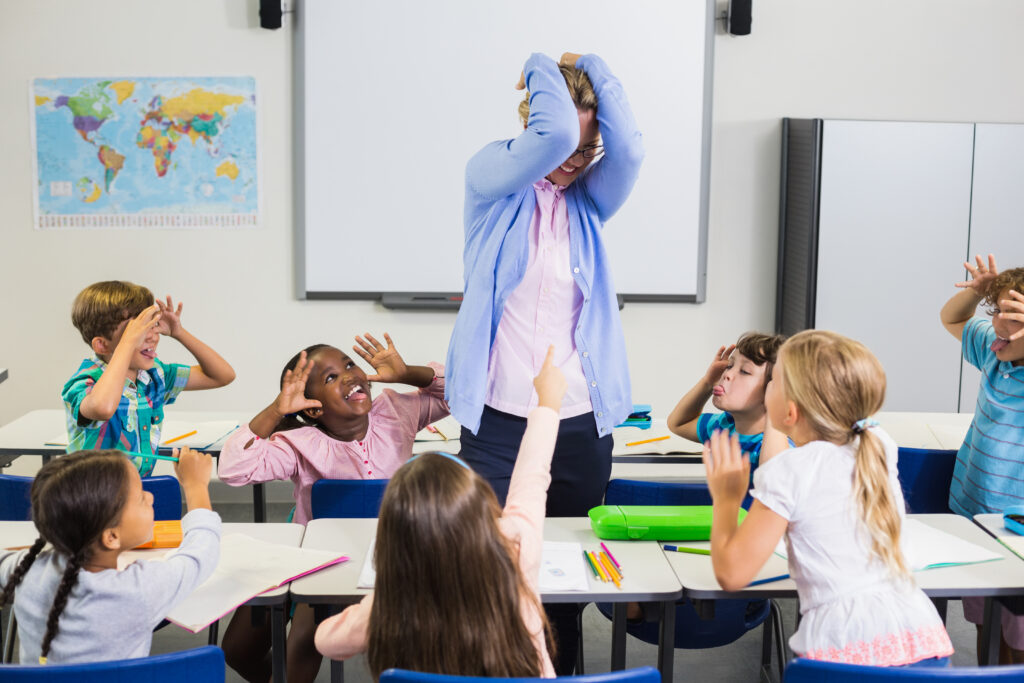IEPs are an important aspect of a student’s growth and...
Read MoreChallenges Facing Public School Leadership

by: Jim Maziejka

School leaders in today’s age are tasked with solving several challenges in public schools that range from a wide variety of issues. We have identified challenges within two categories:
- Professional challenges – the public facing challenges most often addressed in open forums and monthly board meetings.
- Actual challenges – the day-to-day challenges requiring urgent attention often diverting time and resources prohibiting school leaders from being effective leaders, decision-makers, communicators and collaborators to ensure the overall success of their school districts.
“Professional” Challenges facing Public School Leadership
It’s not easy being a Leader and setting direction with Public Schools. School Leaders are tasked with a myriad of issues that their predecessors and mentors were not entrusted with guiding a pathway for effective solutions. “We are learning on the fly” is the new normal. It is important to note that the specific concerns can vary depending on the location, budget and individual circumstances of the respective public-school environment.
1. Budget constraints
Public schools often face budget limitations and school leadership must find ways to manage limited resources while ensuring a quality education. They need to make difficult decisions regarding funding allocations, staffing, and educational programs to maximize the impact of available resources.
2. Academic achievement
School Leaders are responsible for improving academic outcomes and ensuring students meet or exceed educational standards. They must address issues in achievement gaps, student retention, graduation rates, and test scores. Developing strategies to enhance teaching and learning, implementing curriculum improvements and providing professional development for teachers are essential in addressing these the myriad of ever-changing issues.
3. Teacher recruitment and retention
Hiring and retaining qualified teachers is a persistent challenge. School Leaders must attract and retain skilled educators by offering competitive salaries, professional development opportunities and supportive work environments. Teacher shortages and turnover are on-the-rise and negatively impacting student achievements and overall school performance.
4. School safety
Ensuring a safe and secure learning environment is a top priority. School Leadership must develop and implement effective safety protocols, emergency response plans, and preventative measures to protect students, staff, and visitors from potential threats of violence, bullying and/or natural disasters.

5. Equity and diversity
School Leaders are responsible for promoting equity and inclusivity in education. They must address disparities in resources, educational opportunities and outcomes among students from different socioeconomic backgrounds, races and abilities. Developing policies and programs that provide equal access to quality education and eliminate discriminatory practices is crucial.
6. Community engagement
School Leadership need to foster positive relationships with parents, community members and stakeholders. Building trust, maintaining open lines of communication and involving the community in decision-making processes can help create a supportive educational environment.
7. Technology integration
Keeping pace with technological advancements and integrating the technology into the curriculum is essential for preparing students for the future. School leadership must ensure access to reliable technological infrastructure, implement effective digital learning initiatives and provide adequate training and support for teachers to effectively utilize these platforms.
8. Legislative and policy changes
School Leadership must navigate and adapt to evolving educational policies, laws, and regulations at the local, state, and federal levels. Staying informed, advocating for the needs of their district, and ensuring compliance with legal requirements are critical responsibilities.
9. Mental health and well-being
The mental health and well-being of students and staff are increasingly recognized as crucial factors with academic success. School Leadership must prioritize mental health support services, implement social-emotional learning programs, and collaborate with community resources to address the diverse needs of students.
10. Demographic shifts and enrollment trends
Changing demographics and fluctuating enrollment patterns can pose challenges for public school leadership. They need to anticipate and plan for shifts in student populations, accommodate changing educational needs and adjust staffing and resources accordingly.

11. Vaping
The rise in popularity of electronic cigarettes has led to an increase in vaping among students. School Leadership face the challenge of addressing this trend and its associated risks. School Leaders often work with teachers, counselors and parents to implement prevention programs, enforce policies against vaping and educate students about the health risks and consequences of vaping.
12. Substance Abuse
Drug use, including the misuse of prescription drugs, marijuana, alcohol or illicit substances remains a high concern in public schools. School Leaders strive to create a safe and drug-free environment for students. They collaborate with law enforcement, community organizations and health professionals to develop prevention programs, provide counseling services and implement disciplinary measures to address drug-related incidents. Supporting students struggling with substance abuse and providing resources for intervention and rehabilitation are important aspects of their role.
“Actual” Challenges facing Public School Leadership
Issues that school leadership may encounter can often stem from the everyday challenges and situations that arise in educational settings. While these issues may not be their primary mission, they are extremely time-consuming and may hinder the ability in seeking educational excellence:
1. Prankster students
School leadership may occasionally find themselves dealing with mischievous students who engage in harmless pranks or playful acts. From funny classroom antics to creative pranks during school events, these situations can bring unexpected amusement.
While school leadership must maintain discipline and address any disruptions, they may also find themselves amused by the cleverness and creativity of their students’ pranks. It’s worth noting that while humor can be found in many situations, school leadership also face serious responsibilities and challenges in ensuring the smooth operation of schools and providing quality education.
2. Unreasonable or difficult parents
Dealing with “crazy” or difficult parents is a challenge that school leadership may encounter. While it’s important to approach these situations with empathy and professionalism, there can be instances where parents’ behaviors or demands may be considered extreme or unreasonable.
3. Social media warriors
Public school social media warriors play a crucial role in shaping public discourse and influencing their peers’ perspectives. Using digital platforms to challenge the status quo, raise awareness about societal inequalities and push for policy changes. By leveraging the power of social media, their voices are heard and may mobilize others to take action – this action is not always positive.
4. Inheriting a bad teacher
It is important to remember that not all teachers are the same. A teacher who is considered ineffective, unqualified or unsatisfactory in terms of their teaching abilities or classroom management skills can be a challenging situation for the students, the faculty as well as the administration.

5. Board members with an agenda:
While it is not uncommon for board members to have their own perspectives and priorities, it becomes problematic when they prioritize their personal agenda over the best interests of students, educators and the community as a whole. When board members push for policies or decisions that primarily serve their own interests rather than focusing on improving the educational experience and outcomes for students, it can lead to conflicts and hinder the overall progress of the school district.
6. Underpaid /under-qualified principals
The issue of underpaid or underqualified principals in schools can have significant implications for the overall quality of education and school leadership. When principals are underpaid, it can make it challenging to attract and retain highly qualified individuals for these critical positions. Similarly, when principals are underqualified or lack the necessary skills and experience, it can hinder effective leadership and administration within the school.
7. Community not what I anticipated
When the public school community does not meet one’s expectations, it can be a challenging situation. It’s natural to have certain expectations about the community you will be a part of, and when those expectations are not met, it can lead to disappointment or frustration.
8. Maintaining status quo
A phrase often used to resist change or maintain the status quo in various contexts, including within school communities. It implies a reluctance to consider alternative approaches or new ideas, relying instead on traditional or familiar methods. While there can be value in maintaining certain practices, this mindset can also hinder progress, innovation and growth.
9. Another Hearing….
Excessive public school hearings can consume significant time and resources for both educators and administrators. This can divert attention and efforts away from core educational activities, curriculum development and student support. It is important to strike a balance between engaging the community and ensuring that the educational system functions effectively.
10. Students of Low-Income Families
Poverty is indeed a significant issue that can have a profound impact on students and their educational experiences. Students from low-income families often lack access to essential resources such as food, healthcare, stable housing and educational materials. These circumstances negatively affect their overall well-being and ability to focus on their studies.

11. What does Diversity, Inclusion, Gender Dysphoria and Discrimination have to do with Education?
Such a statement exemplifies the complex factors that contribute to challenges within educational settings. Issues in schools arise from a variety of sources and are influenced by numerous factors, including social, economic, cultural and systemic elements. It is essential for school leadership to recognize the unique needs and challenges faced by students, as well as the staff, of different backgrounds and work towards fostering an inclusive and supportive educational environment for all.
12. Marijuana – problem with students and teachers
The legality of marijuana varies across jurisdictions and often creates a mixed message in the school environment. Schools play an important role in educating students and staff about the potential risks and consequences of marijuana use. Providing accurate and evidence-based information on the effects of marijuana and responsible decision-making can help students and staff make informed and often better choices.
Communication Is Crucial for School Leadership to Solve These Challenges
Communication is a vital component for resolving conflicts and addressing Professional and Actual challenges within our public school system. Effective communication allows individuals, School Leaders and even language translation experts to express our thoughts, feelings and concerns, leading to improved relationships and problem-solving.
Pierian Spring Group specializes in communication for students, their families, and communities that speak English as a second language. It can be very difficult to resolve communication issues in one language – Pierian Spring Group can help in over 200! Learn more about translation services for K-12 schools.
More Translation Insights
Empowering Education: The Significance of Accurate and Timely Monthly Reporting
From curriculum development to resource allocation, educators and administrators rely...
Read MoreWhy Public Schools Should Translate Robocalls
Robocalls are automated telephone calls that deliver pre-recorded messages to...
Read More




